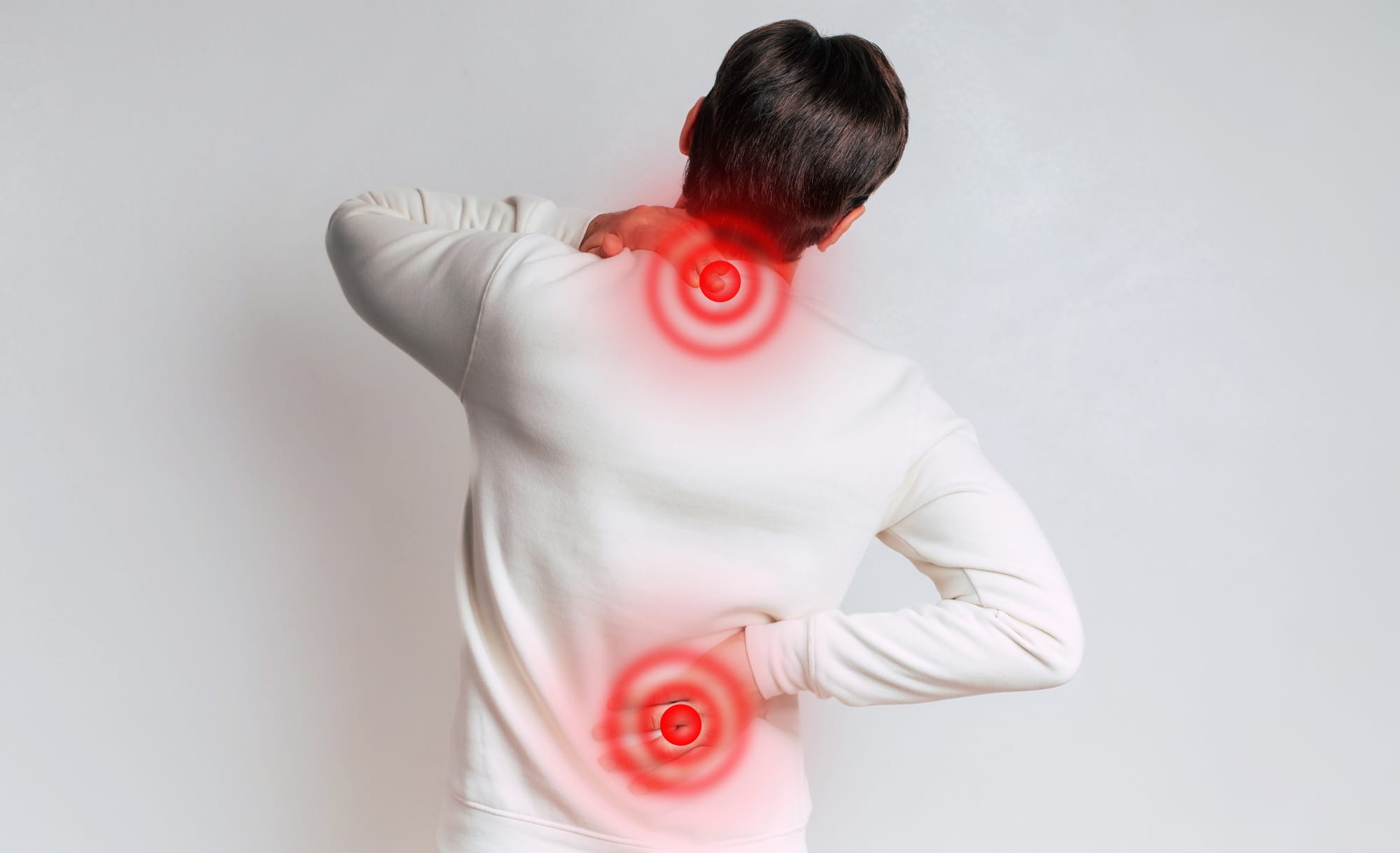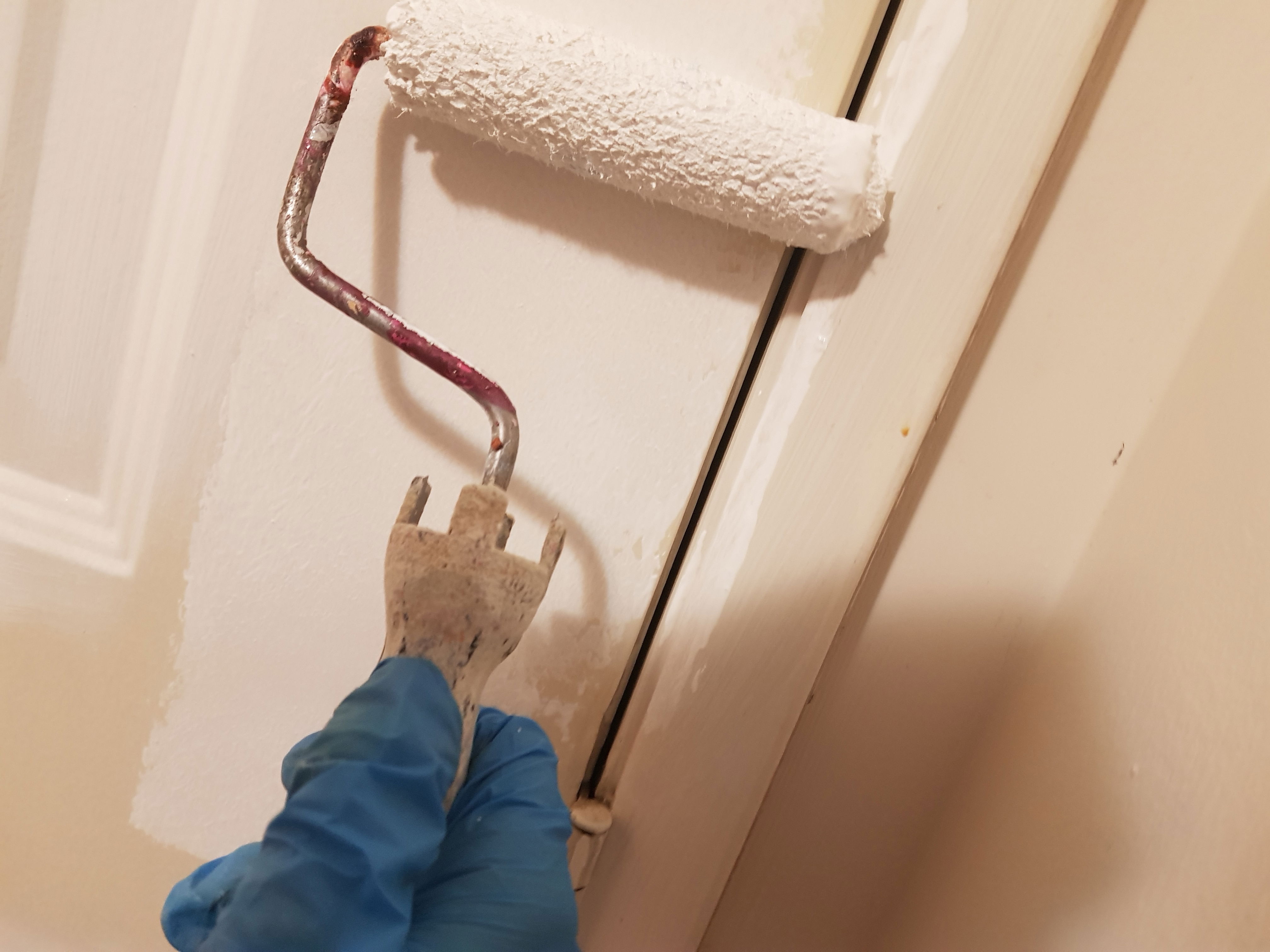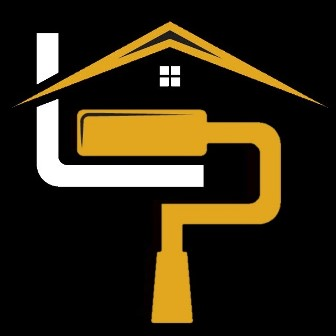Pro Tips for Avoiding Neck Shoulder and Back Strain While Painting

Key Highlights
- Importance of using ergonomic tools and maintaining good posture while painting.
- Tips on preparing for a pain-free painting project with proper stretching and tool selection.
- Techniques to minimize strain, such as taking regular breaks and using proper painting methods.
Avoiding Neck, Back and Shoulder Strain While Painting
Let's talk about something that doesn't get nearly enough attention in the painting world: avoiding neck, back, and shoulder strain. I remember tackling a particularly tough project where my neck and shoulders were aching for days afterward. It was a real eye-opener to the importance of proper techniques and tools. We don't just focus on delivering high-quality results; we also ensure our team stays healthy and pain-free. Here's how you can do the same.
Understanding the Causes of Neck and Shoulder Strain
Repetitive Movements
Painting involves a lot of repetitive motions, and these can quickly lead to muscle fatigue. Think about the constant up-and-down motion required to cover a large wall. Repeating this action for hours can strain your muscles, especially if you're not taking regular breaks.
Poor Posture
Poor posture is another major culprit behind neck and shoulder strain. When you're painting, especially ceilings or high walls, it's easy to find yourself in awkward positions. Keeping your neck craned upwards or your shoulders hunched can lead to significant discomfort and pain.
Inadequate Tools
Using the wrong tools can significantly contribute to strain. For instance, using a short-handled brush for painting a ceiling forces you to stretch and strain more than necessary. The right tools can make your job easier and less strenuous.Example: Trying to paint a ceiling with a short-handled brush is a recipe for disaster. The constant reaching and stretching not only make the job harder but also put unnecessary strain on your neck and shoulders.

Preparing for a Pain-Free Painting Project
When it comes to painting, avoiding neck, back, and shoulder strain is essential for both DIY enthusiasts and professionals. Let’s dive into some practical tips that will keep you comfortable and efficient throughout your painting projects.
Stretching and Warm-Up
Importance of Warming Up
Before you even pick up a brush, it's crucial to prepare your body. Warming up can prevent injuries and make your painting session more enjoyable.
Suggested Stretches
Incorporate these simple stretches to get your muscles ready:
- Neck Rolls: Gently roll your head in a circular motion to loosen your neck muscles.
- Shoulder Shrugs: Lift your shoulders up towards your ears and then release them down.
- Arm Circles: Extend your arms and make small circles, gradually increasing the size.
Choosing the Right Tools
Benefits of Ergonomic Tools
Investing in ergonomic tools can significantly reduce strain. Long-handled brushes and lightweight rollers are designed to minimize the need for awkward positions.
How These Tools Help
Using the right tools can:
- Reduce Overreaching: Long handles mean you don’t have to stretch awkwardly.
- Minimize Weight: Lightweight tools reduce the stress on your muscles.
Setting Up Your Workspace
Proper Height for Ladders and Scaffolding
Ensure your ladders and scaffolding are at the right height to avoid overreaching. This setup helps maintain a comfortable working position.
Arranging Tools and Paint
Keep your tools and paint within easy reach to avoid unnecessary movements. Arrange your workspace so that everything you need is close at hand.
Techniques to Minimize Strain While Painting
Maintain Good Posture
Good posture is key to preventing strain. Here are some tips:
- Straight Back: Keep your back straight and avoid hunching over.
- Relaxed Shoulders: Let your shoulders stay down and relaxed, not scrunched up.
Use Proper Painting Techniques
Adopting efficient painting techniques can spread the workload evenly and reduce fatigue:
- 'W' Pattern: Start with a ‘W’ shape and fill in the gaps to distribute the paint evenly.
- Change Positions: Avoid staying in one position for too long. Move around and adjust your stance regularly.
Take Regular Breaks
Taking breaks is essential to prevent muscle fatigue.
In Our Experience:
"We've found that integrating ergonomic tools and techniques significantly enhances project outcomes and worker satisfaction. One project particularly stands out where ergonomic rollers and an adjusted work schedule prevented common strain injuries, leading to a more enthusiastic and energetic team. These adjustments not only improved our efficiency but also resulted in a flawless finish that delighted the client. Embracing these practices has become a cornerstone of our operational philosophy, ensuring we deliver exceptional results while maintaining our team’s health and morale."
Tools and Accessories to Reduce Strain
When painting, especially on large projects, reducing physical strain is essential for maintaining your health and ensuring a high-quality finish. Here are some tools and accessories that can make a significant difference.
Ergonomic Brushes and Rollers
Features to Look For
Ergonomic painting tools are designed to minimize strain and enhance comfort during use. When selecting ergonomic brushes and rollers, consider the following features:
- Comfortable Grip: Look for handles with soft, non-slip grips that fit comfortably in your hand.
- Lightweight: Choose tools that are lightweight to reduce the effort needed to maneuver them.
- Flexible Angles: Some brushes and rollers have adjustable heads or handles that allow you to change the angle, reducing the need for awkward wrist positions.
How These Tools Help
Ergonomic tools help by:
- Reducing Muscle Fatigue: Less effort is required to hold and use them.
- Improving Precision: Comfortable handles allow for better control, resulting in cleaner lines and a smoother finish.
- Preventing Repetitive Strain Injuries: Ergonomically designed tools distribute pressure more evenly, reducing the risk of strain injuries over time.
Extension Poles
Benefits of Using Extension Poles
Extension poles are invaluable for reaching high and low areas without the need for constant ladder adjustments. They come in various lengths and materials, suitable for different types of projects.
- Extended Reach: Easily paint high ceilings and low baseboards without bending or stretching.
- Versatility: Most extension poles are compatible with a variety of brush and roller attachments, making them versatile for different tasks.
Tips on Selecting the Right Pole
When choosing an extension pole, consider the following:
- Length: Select a pole that extends to the height you need without being too cumbersome.
- Material: Lightweight materials like aluminum or fiberglass are easier to handle.
- Locking Mechanism: Ensure the pole has a reliable locking mechanism to keep it steady at different lengths.
Adjustable Ladders
Choosing the Right Ladder
An adjustable ladder can be set to various heights, making it a versatile tool for different parts of a painting project.
- Multi-Position: Look for ladders that can be configured in multiple ways, such as straight, A-frame, or scaffold mode.
- Stability: Ensure the ladder has a wide base and secure locking mechanisms for stability.
Safety Tips for Using Ladders
To ensure safe ladder use, follow these tips:
- Proper Setup: Always set up the ladder on a flat, stable surface.
- Three Points of Contact: Maintain three points of contact (two hands and one foot or two feet and one hand) when climbing.
- Don’t Overreach: Move the ladder as needed instead of overreaching, which can lead to falls.
Post-Painting Care
After a long day of painting, taking care of your body is just as important as using the right tools. Proper post-painting care helps prevent soreness and injuries.
Cool Down and Stretch
Importance of Cooling Down
Just as athletes cool down after a workout, painters should cool down after a painting session. Cooling down helps to relax muscles and prevent stiffness.
Suggested Cool-Down Exercises
Incorporate these exercises into your post-painting routine:
- Neck Stretches: Gently tilt your head to each side, holding for 15-20 seconds.
- Shoulder Rolls: Roll your shoulders forward and backward in slow, controlled motions.
- Arm and Wrist Stretches: Extend your arms and gently pull your fingers back to stretch your wrists and forearms.
Self-Care Tips
Applying Ice or Heat
Using ice or heat on sore areas can significantly reduce pain and inflammation:
- Ice: Apply ice packs to sore muscles for 15-20 minutes to reduce swelling.
- Heat: Use a heating pad or warm towel to relax tense muscles.

Lightmen Painting’s Commitment to Health and Quality
At Lightmen Painting, we take pride in our commitment to both exceptional craftsmanship and the well-being of our team. This dedication extends beyond just using high-quality materials; it encompasses a holistic approach to ensuring the health and safety of our painters through comprehensive training programs and the use of ergonomic equipment.
Training and Safety Programs
Our commitment to health starts with robust training and safety programs. Every new team member undergoes thorough training focused on proper techniques to avoid strain and injury. This training includes best practices for posture, tool usage, and efficient painting methods.
Use of Ergonomic Equipment
Investing in ergonomic equipment is another crucial aspect of our approach. We understand that the right tools can make a significant difference in reducing physical strain and improving overall job performance.
Customer-Focused Approach
While we prioritize the health and safety of our painters, we never compromise on delivering top-notch results for our clients. Our customer-focused approach ensures that projects are completed efficiently and safely, without sacrificing quality.
Personal Note: Our commitment to delivering exceptional results while maintaining a safe and healthy work environment is something we take very seriously. We believe that a happy, healthy team is a productive team, and this philosophy shines through in the quality of our work.
Conclusion
Recap
To summarize, avoiding neck and shoulder strain while painting involves a combination of proper training, ergonomic equipment, and maintaining good posture and painting techniques. At Lightmen Painting, we are dedicated to ensuring the health and safety of our team through comprehensive training programs and the use of high-quality, ergonomic tools. This commitment not only benefits our painters but also ensures that we can deliver exceptional results for our clients.
Action
If you're looking for professional, ergonomic painting services that prioritize both quality and the well-being of the team, Lightmen Painting is here to help. Contact us today to learn more about our services and how we can assist with your next painting project.
Personal Note
Achieving a professional-looking paint job without physical strain is entirely possible with the right techniques and tools. At Lightmen Painting, we are committed to ensuring that every project is completed to the highest standards while maintaining the health and safety of our team. Let us help you transform your space with our expert, ergonomic painting services.
Do You Have Questions? Give Us A Call With Any & All! 503-389-5758
-
People Also Ask:
What are the key benefits of using ergonomic tools while painting?
Using ergonomic tools in painting reduces physical strain, increases efficiency, and enhances safety. These tools are designed to fit better in your hand, minimize repetitive motion injuries, and can significantly extend the duration one can comfortably paint.
How can proper posture improve painting projects?
Maintaining good posture while painting prevents muscle fatigue and injuries related to strain and overuse. Proper posture ensures that the body is aligned and balanced correctly, distributing weight evenly and reducing pressure on any single part of the body, thus enhancing endurance and precision in painting tasks.
Why is it important to take regular breaks during a painting project?
Taking regular breaks helps prevent overuse injuries, reduces fatigue, and improves overall productivity. Breaks allow muscles to relax, circulation to improve, and gives a moment for reassessment of the work, which can help maintain high-quality standards throughout the project.
-
SUBSCRIBE TO OUR BLOG: Stay informed with the latest in Painting and DIY projects by subscribing to Lightmen Painting. Get insights, tips, and more delivered straight to your inbox. We would also love to know what you would like to read about, leave thoughts on where we should go next. Interests, Topics, Ideas, all are welcome.
If your in the Portland, Or. area and need advice or a free no obligation estimate call us at 503-389-5758 or email scheduling@lightmenpainting.com
Thanks for stopping by Lightmen Daily! Stay tuned for more practical tips and expert advice on making your painting projects flawless, from wall to floor!
Definitions
- Ergonomic Tools: Devices designed to minimize physical effort and discomfort while maximizing efficiency, tailored to human body mechanics.
- Posture Maintenance: The practice of holding the body in a way that prevents strain during activity by aligning and balancing it properly.
- Painting Techniques: Specific methods or approaches used to apply paint to a surface, which can vary widely in terms of tool use, stroke type, and detail work.
- Strain Prevention: Methods or practices aimed at avoiding excessive stress or injury to muscles and joints.
- Repetitive Stress Injuries: Injuries caused by repetitive motion or overuse of certain body parts, common in professions requiring frequent, repetitive tasks.
- Break Scheduling: The planned interruption of work to rest, which can help reduce physical fatigue and mental strain.
- Ergonomic Assessment: Evaluation of work environments and practices to align them more closely with ergonomic standards to improve worker comfort and efficiency.
- Tool Selection: The process of choosing the appropriate tools for a job, considering factors like the tool’s design, the user’s physical needs, and the task requirements.
- Work Efficiency: The effectiveness with which job tasks are completed, ideally maximized while maintaining high-quality results and worker safety.
- Safety Gear: Equipment used to protect against injuries and accidents at work, including items like gloves, masks, and safety glasses.
Lightmen Painting Serving: Portland, Tigard, Lake Oswego, Tualatin, West Linn, Milwaukie, Sherwood, Happy Valley, Oregon City, Beaverton, Hillsboro, Gresham -Trade Partners-
